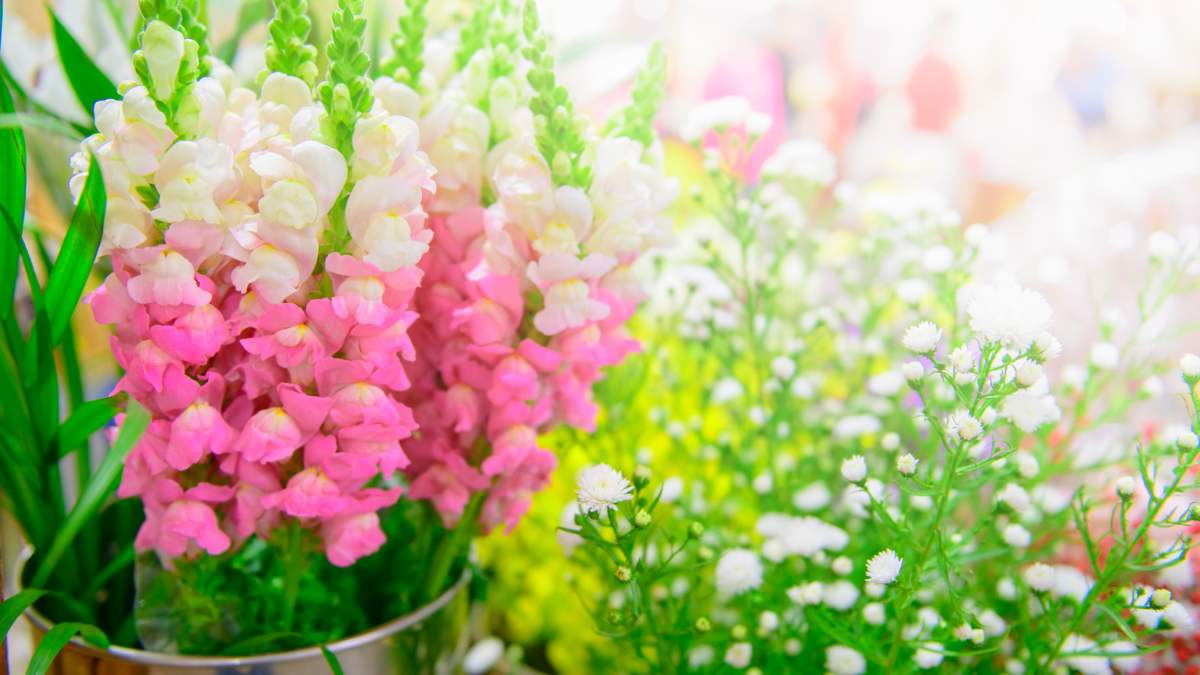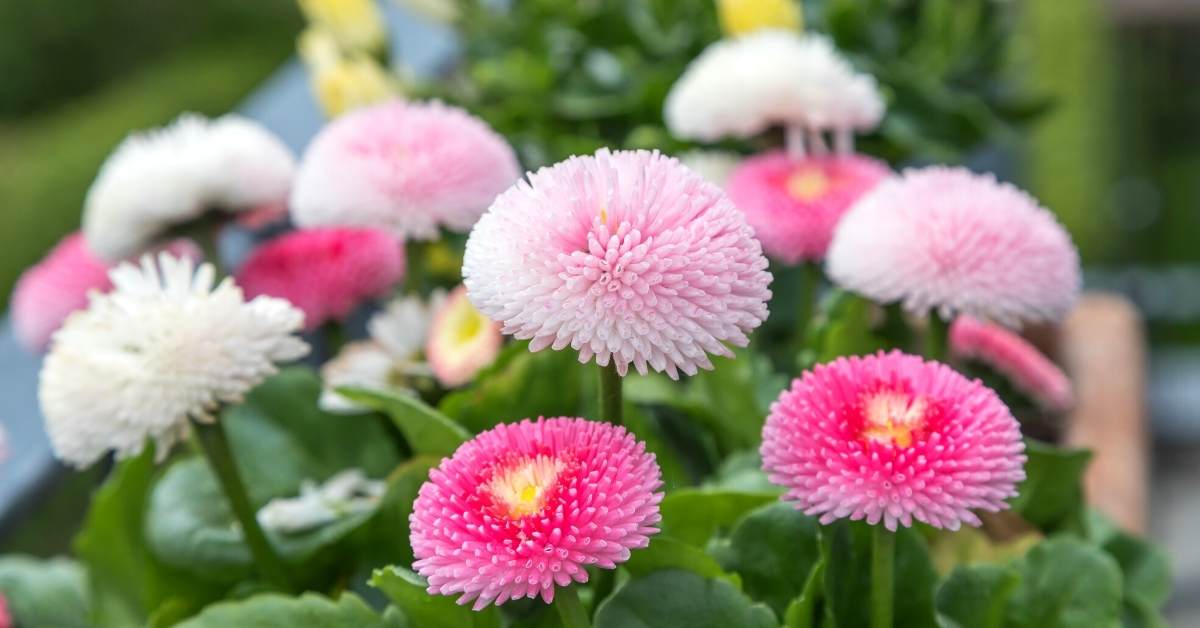Are you looking to add a splash of vibrant color to your garden or floral arrangements? Look no further than pink snapdragon flowers (Antirrhinum majus). With their striking appearance and captivating charm, these brightly colored blooms are a delight for any gardening enthusiast or flower lover.
In this guide, we will explore how to grow, care for, and enjoy pink snapdragons, including tips for their vase life and their suitability as great-cut flowers.
Growing Pink Snapdragon Flowers
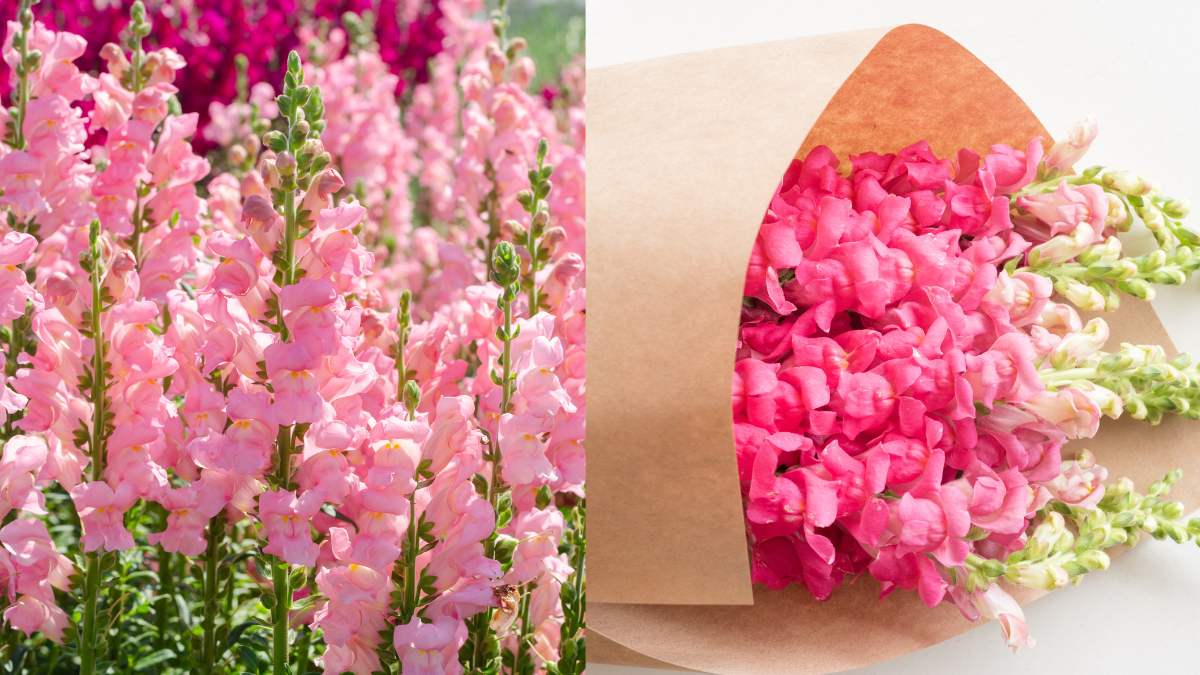
Pink snapdragons are relatively easy to grow, making them an excellent choice for both beginners and experienced gardeners. Here are some key considerations for successfully cultivating these lovely plants:
- Hardiness and Blooming Season: Pink snapdragons are hardy up to 32°F (0.0°C) and typically bloom during early spring, spring, and autumn. This allows you to enjoy their enchanting blooms during multiple seasons.
- Plant Habit and Size: Pink snapdragons have a mounded, upright growth habit, reaching a height of 6-10 inches (15-25 cm) and a width of 10-12 inches (25-30 cm). Their compact size makes them suitable for various garden settings, including borders, containers, or even edging plants.
- Exposure and Watering: Pink snapdragons thrive in sunny locations, requiring at least six hours of direct sunlight each day. They prefer medium watering levels, so make sure to water them regularly, keeping the soil evenly moist without waterlogging.
- Fertilizing and Spacing: Feed your pink snapdragons with a balanced fertilizer every two weeks to promote healthy growth and abundant flowering. When planting them, space the plants approximately 10-12 inches (25-30 cm) apart to allow sufficient airflow and prevent overcrowding.
Caring for Pink Snapdragon Flowers
Pink snapdragons are known for their low maintenance requirements. However, a little care can go a long way in ensuring healthy and long-lasting blooms:
- Attracting Bees and Hummingbirds: Pink snapdragons have fragrant flowers that attract bees and hummingbirds to your garden, contributing to a thriving ecosystem. Enjoy the delightful presence of these beneficial pollinators as they visit your snapdragon blooms.
- Cutting Stems and Vase Life: Pink snapdragons make great cut flowers, perfect for adding a touch of elegance to your floral arrangements. When cutting stems, do so early in the morning or late in the day and place them in a bucket of water immediately. Change the water every two days to maximize their vase life, which can range from 7 to 10 days.
- Snapdragon Rocket Pink: One particularly noteworthy variety of pink snapdragon is Snapdragon Rocket Pink. With its impressive height, this cultivar can reach up to 36 inches (91 cm) and features beautiful, densely packed flower spikes in shades of pink. Consider incorporating Snapdragon Rocket Pink into your garden for a stunning vertical display.
How to Prune and Deadhead Pink Snapdragon Flowers
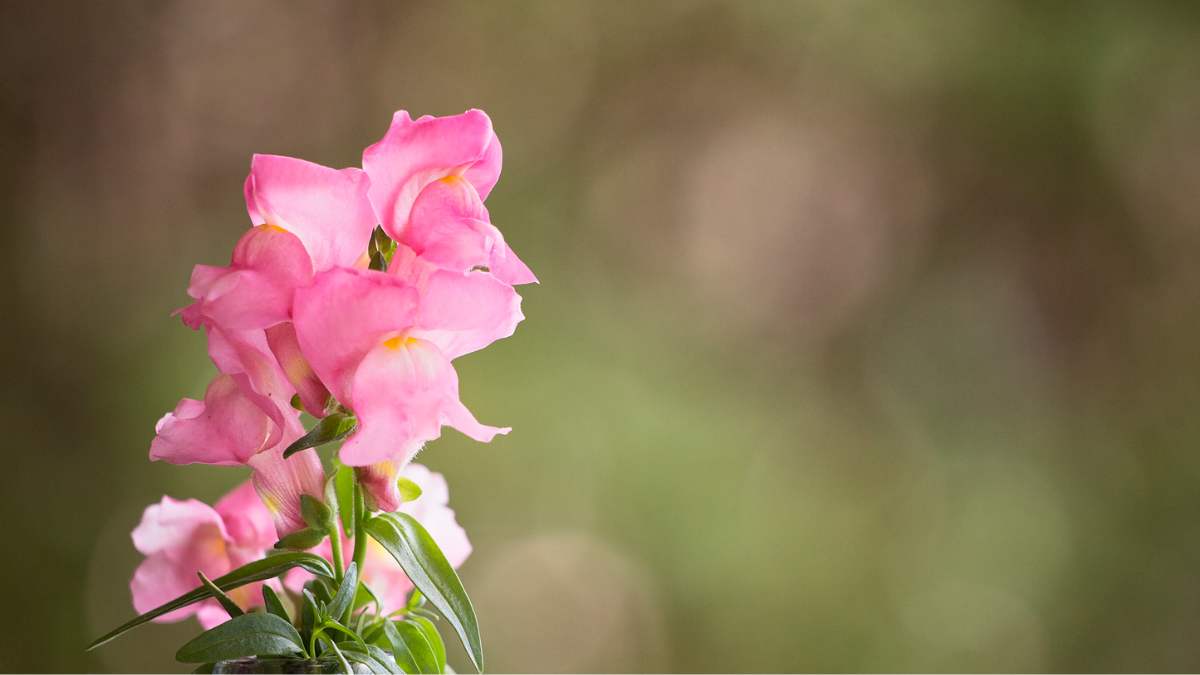
Snapdragon flowers are a delight to have in your garden, especially the pink ones that add a touch of charm and romance. However, to keep them blooming for a long time, you need to prune and deadhead them regularly.
Pruning and deadheading are simple gardening tasks that can make a big difference in the health and appearance of your snapdragon plants. Here’s how to do it:
Pruning:
Pruning is the process of removing unwanted or damaged parts of the plant, such as dead or diseased stems, leaves, or flowers. Pruning helps to improve air circulation, prevent diseases, and shape the plant. For snapdragons, pruning is best done in early spring before they start to flower.
To prune your snapdragons, use clean and sharp pruners to cut back any weak or leggy stems to about half their length. This will encourage the plant to produce more branches and flowers. You can also pinch the stem tips back about an inch or so, just above the next set of true leaves, to promote bushier plants.
Deadheading:
Deadheading is the process of removing faded or spent flowers from the plant to prevent them from forming seeds. Deadheading helps to prolong the flowering period, as the plant will focus its energy on producing more flowers instead of seeds.
It also helps to keep the plant tidy and attractive. For snapdragons, deadheading is best done regularly, about once or twice a week, throughout the flowering season. To deadhead your snapdragons, use clean pruners or scissors to snip the flower stalk below the blossom gently. You can also use your fingers to pinch off the flowers if they are soft enough.
Dispose of the deadheads in a compost bin or trash can. However, if you want to save some seeds for next year, you can leave some of the flowers on your favorite snapdragon plants until they become fully brown and dry.
By following these simple steps, you can prune and deadhead your pink snapdragon flowers and enjoy their beauty for a long time. You can also cut some of the fresh flowers and bring them indoors for a lovely bouquet or arrangement.
How to Propagate Pink Snapdragon Flowers from Seeds or Cuttings

Pink snapdragon flowers are a lovely addition to any garden, with their delicate and fragrant blooms that attract bees and butterflies. If you want to have more of these charming plants, you can propagate them from seeds or cuttings. Here are the steps to follow for each method:
Seeds
You can start snapdragon seeds indoors about eight to 10 weeks before the last frost date in your area or sow them directly in the garden in fall or spring if you live in USDA Hardiness Zones 7 to 10. Choose a sunny location and prepare the soil by loosening it and adding some compost. Moisten the soil and sprinkle the seeds on the surface, as they need light to germinate.
Keep the soil moist but not soggy until the seeds sprout, which can take two to three weeks. Thin the seedlings to six to 12 inches apart when they have two sets of true leaves.
Cuttings
You can also propagate snapdragons from stem cuttings taken from a healthy parent plant. Cut a two-inch section of the stem just below a leaf node, and remove the lower leaves. Dip the bottom of the cutting in rooting hormone and insert it into a pot filled with moist, sterile, soilless potting mix.
Alternatively, you can place the cutting in a jar of water and change the water every few days. Keep the cutting in a bright but indirect light location, and mist it regularly to maintain humidity. The cutting should root in about four to six weeks.
Once your snapdragon plants are well-rooted, you can transplant them to your garden or containers. Choose a spot that gets full sun or partial shade and has well-drained, fertile soil. Water them regularly, especially during hot and dry periods, and fertilize them once a month with a balanced fertilizer. Deadhead the spent flowers to encourage more blooming, and enjoy your pink snapdragon flowers for a long time.
Common Pests and Diseases of Pink Snapdragon Flowers
Pink snapdragon flowers are not only beautiful but also resilient and easy to grow. However, they are not immune to some common pests and diseases that can affect their health and appearance. Here are some of the most common problems that you may encounter with your pink snapdragon flowers and how to prevent or treat them:
Rust:
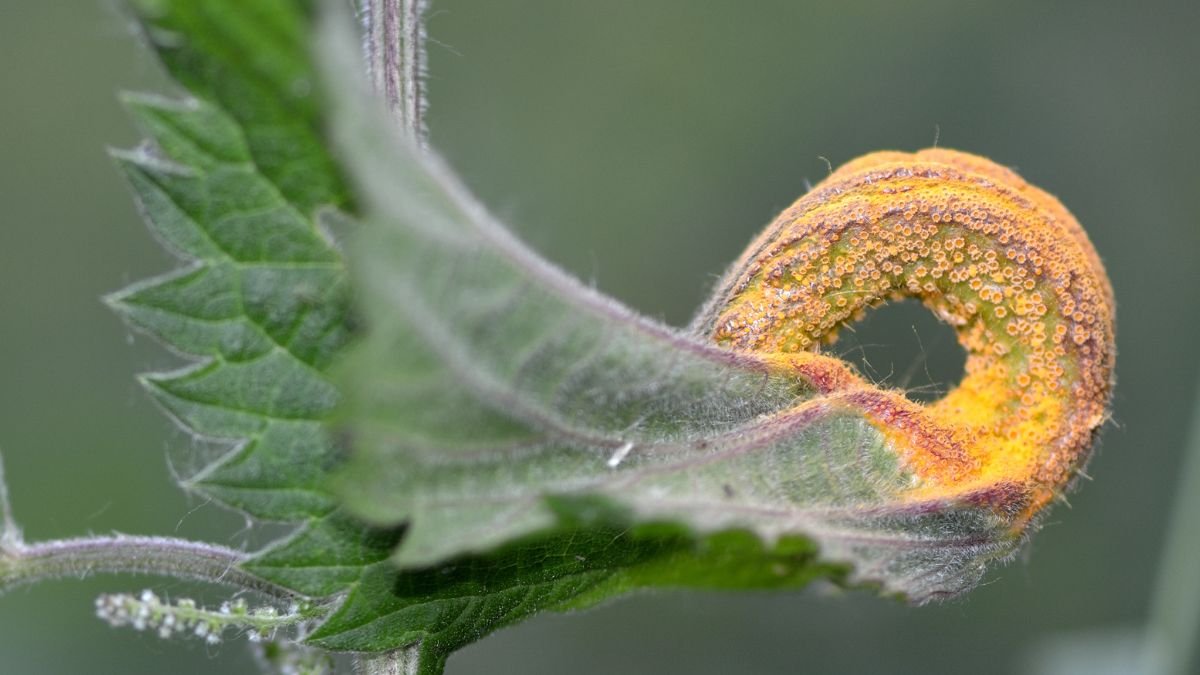
This is a fungal disease that causes orange or yellow spots on the leaves and stems of snapdragons. It can reduce the vigor and flowering of the plants and eventually kill them if left untreated. Rust is caused by a fungus called Puccinia antirrhini, which thrives in humid and wet conditions. To prevent rust, avoid overhead watering, space your plants well to improve air circulation, and remove any infected plant parts. You can also spray your plants with a copper-based fungicide as soon as you notice any signs of rust.
Anthracnose and blight:
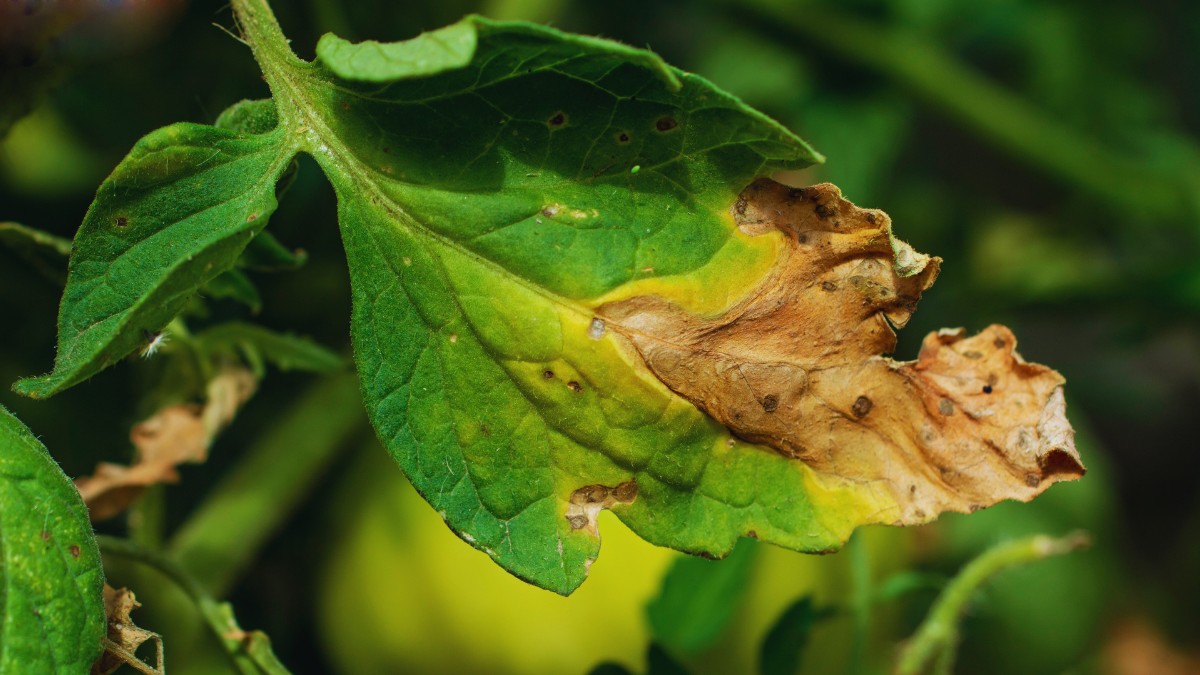
These are also fungal diseases that can cause wilting, browning, and rotting of the leaves, stems, and flowers of snapdragons. They are spread by splashing water or infected tools and can be very difficult to control once they infect the plants.
To prevent anthracnose and blight, use clean and sharp tools, water at the base of the plants, and avoid planting snapdragons in the same spot every year. If you notice any symptoms of these diseases, remove and destroy the affected plants immediately. You can also apply a copper-based fungicide to protect your healthy plants.
Powdery mildew and downy mildew:
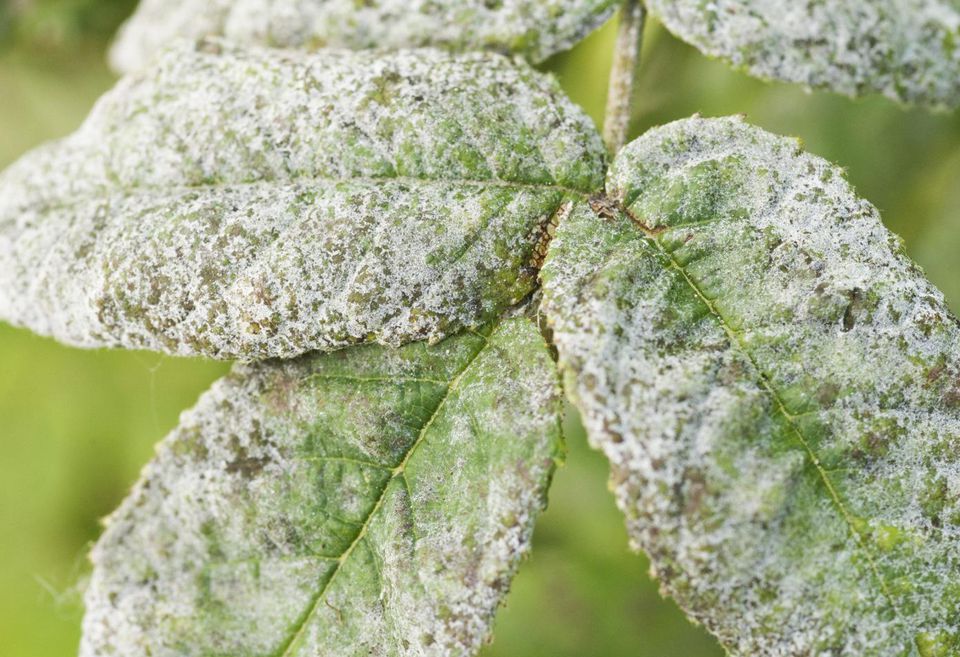
These are also fungal diseases that can affect snapdragons, especially in warm and humid weather. Powdery mildew appears as a white or gray coating on the leaves and stems, while downy mildew appears as yellow or brown spots on the upper leaf surface and gray or purple fuzz on the lower leaf surface. Both diseases can reduce the growth and flowering of snapdragons and make them more susceptible to other problems.
To prevent powdery mildew and downy mildew, plant snapdragons in full sun or partial shade, space them well to allow air circulation and water them in the morning to allow the foliage to dry. You can also spray your plants with a fungicide such as neem oil or sulfur if you notice any signs of these diseases.
Aphids, mites, mealybugs, and whiteflies:
These are sap-sucking insects that can feed on the leaves and flowers of snapdragons, causing them to curl, distort, or drop. They can also transmit viruses that can harm your plants. To prevent these pests, inspect your plants regularly for any signs of infestation, such as sticky honeydew or sooty mold on the leaves.
You can also attract beneficial insects, such as ladybugs or lacewings, that can feed on these pests. If you have a severe infestation, you can spray your plants with insecticidal soap or neem oil to kill these pests.
By keeping an eye on your pink snapdragon flowers and following these tips, you can prevent or treat most of the common pests and diseases that can affect them. You can also enjoy their beauty and fragrance for a long time.
How to Pair Pink Snapdragon Flowers with Other Plants for a Stunning Garden Design
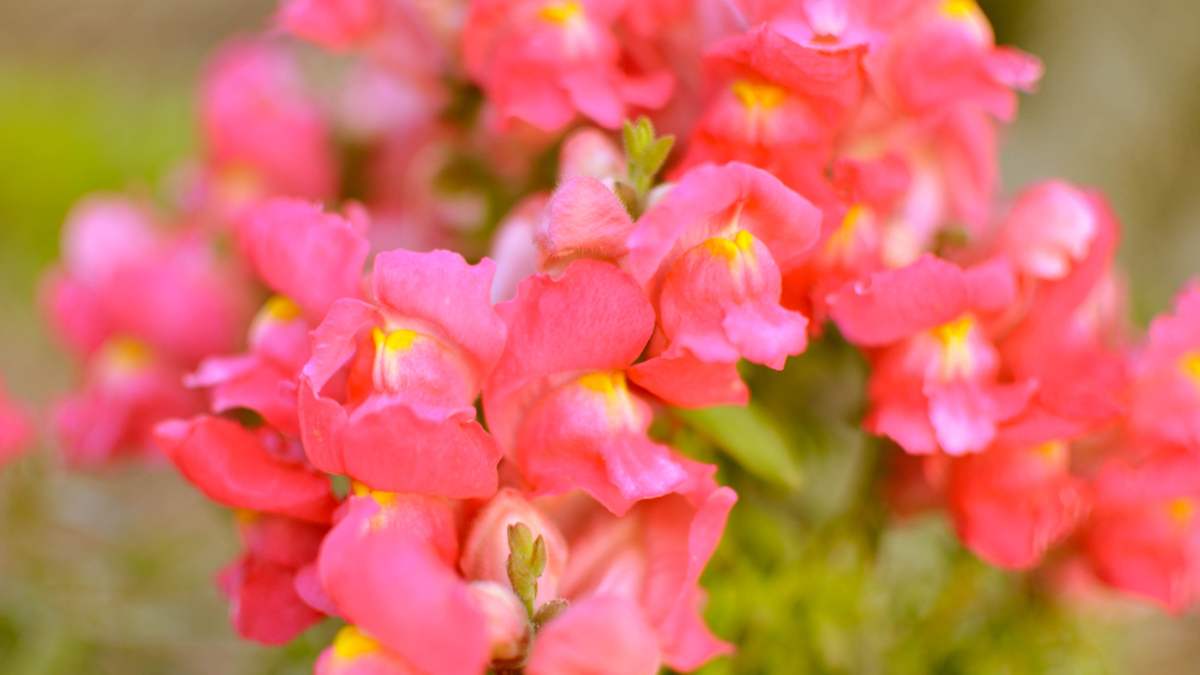
Pink snapdragon flowers are a versatile and attractive choice for any garden design, as they can add height, color, fragrance, and texture to your landscape. They can also attract pollinators such as bees and butterflies and deter deer and rabbits with their bitter taste.
However, to make the most of your pink snapdragon flowers, you need to pair them with other plants that complement their features and needs. Here are some tips and suggestions on how to do that:
- Choose plants that have similar sun and water requirements as snapdragons. Snapdragons prefer full sun or partial shade and moist but well-drained soil. They do not like soggy or dry conditions, so avoid planting them with plants that need a lot of water or very little water. Some plants that have similar needs as snapdragons are roses, lavender, salvia, dianthus, and marigolds.
- Choose plants that have contrasting colors, shapes, or textures to create visual interest and harmony. Pink snapdragon flowers can look stunning when paired with plants that have different hues, forms, or foliage.
For example, you can plant them with purple or blue flowers such as lobelia, pansies, or delphiniums to create a cool color scheme. Or you can plant them with yellow or orange flowers such as calendula, coreopsis, or zinnias to create a warm color scheme. You can also plant them with plants that have different shapes or textures, such as spiky grasses, ferns, or succulents, to create contrast and variety. - Choose plants that have different heights or growth habits to create layers and depth. Pink snapdragon flowers come in different sizes and types, from dwarf varieties that grow only six inches tall to tall varieties that can reach up to four feet tall. You can use them to create layers and depth in your garden design by planting them with plants that have different heights or growth habits.
For example, you can plant tall snapdragons as a backdrop for shorter plants such as petunias, geraniums, or impatiens. Or you can plant dwarf snapdragons as a border or edging for taller plants such as roses, lilies, or hollyhocks. You can also plant trailing or creeping snapdragons in containers, baskets, or wall crevices to add a cascading effect.
By following these tips and suggestions, you can pair your pink snapdragon flowers with other plants for a stunning garden design. You can also experiment with different combinations and see what works best for your space and style. The possibilities are endless!
How to Use Pink Snapdragon Flowers for Dried Floral Arrangements
Pink snapdragon flowers are a great choice for dried floral arrangements, as they retain their color and shape well when dried. They can also add height, texture, and charm to any display. Here are some tips and steps on how to use pink snapdragon flowers for dried floral arrangements:
Choose fresh and healthy pink snapdragon flowers that are fully open or almost open. Avoid flowers that are wilted, damaged, or diseased. Cut the stems at an angle, leaving them as long as possible. Remove any leaves or foliage from the stems.
Dry the pink snapdragon flowers using one of these methods:
Air-drying:
This is the simplest and most natural method of drying flowers. Tie the stems of the snapdragon flowers in small bunches with rubber bands or string. Hang them upside down in a warm, dry, dark, and well-ventilated place, such as an attic, closet, or shed. Make sure they do not touch each other or any surface to prevent mold or discoloration. It may take two to four weeks for the flowers to dry completely.
Desiccant-drying:
This is a faster and more effective method of drying flowers that preserves their color and shape better. Use a desiccant material such as silica gel, sand, borax, or cornmeal to absorb the moisture from the flowers. Fill a shallow container with a layer of desiccant, then place the snapdragon flowers on top, facing upward or sideways.
Cover them completely with more desiccant, making sure to fill the spaces between the petals. Seal the container with a lid or plastic wrap and store it in a dry place. Check the flowers after a week or so to see if they are dry and crisp. If not, cover them again and wait for another week.
Once the pink snapdragon flowers are dry, gently remove them from the drying method and shake off any excess desiccant if used. Spray them lightly with hairspray or acrylic spray to protect them from dust and fading. You can also use floral spray paint to enhance their color if desired.
Arrange the dried pink snapdragon flowers in a vase, basket, wreath, or any other display you like. You can use floral foam or wire to secure them in place and add other dried flowers or grasses to complement them. Some good choices are lavender, roses, baby’s breath, eucalyptus, or pampas grass. Enjoy your dried floral arrangement for months or even years!
What is the best desiccant-drying temperature?
The best desiccant drying temperature to dry snapdragons depends on the type of desiccant material you use, but generally, it should be around 250 degrees Fahrenheit for several hours.
- Choose a desiccant material that can absorb moisture from the snapdragon flowers without damaging them. Some common options are silica gel, sand, borax, or cornmeal.
- Fill a shallow container with a layer of desiccant, then place the snapdragon flowers on top, facing upward or sideways. Cover them completely with more desiccant, making sure to fill the spaces between the petals.
- Seal the container with a lid or plastic wrap and store it in a dry place. Check the flowers after a week or so to see if they are dry and crisp. If not, cover them again and wait for another week.
- Once the snapdragon flowers are dry, gently remove them from the desiccant and shake off any excess. Spray them lightly with hairspray or acrylic spray to protect them from dust and fading. You can also use floral spray paint to enhance their color if desired.
- Arrange the dried snapdragon flowers in a vase, basket, wreath, or any other display you like. You can use floral foam or wire to secure them in place and add other dried flowers or grasses to complement them.
Other Popular Snapdragon Varieties
Pink snapdragon flowers are not the only ones that can brighten up your garden with their cheerful blooms. There are many other snapdragon varieties that come in different heights, growth habits, flower types, and colors.
You can choose from tall, mid-size, dwarf, or trailing plants, depending on your garden space and design. You can also find snapdragons with single, double, or butterfly-shaped flowers, each with its own charm and appeal. Some snapdragons are also known for their strong fragrance, such as the Aroma series. Here are some of the popular snapdragon varieties that you can grow at home:
- Admiral: This series features early-blooming Group I single flowers in crimson, white, yellow, purple, and pink bicolor. The plants can reach up to four feet tall and produce vibrant blooms on sturdy stems.
- Black Prince: This variety has dark green leaves that start out purply black when young. The flowers are velvety and dark crimson and purple in color, creating a striking contrast with the foliage.
- Candy Showers: This is a trailing variety that can fill a hanging basket or spill over a container edge. The flowers are single and come in various colors, such as yellow, orange, red, rose, purple, and deep purple.
- Chantilly: This series has butterfly-shaped flowers that do not snap but have fused petals instead. The plants are tall and produce fragrant blooms in shades of peach, pink, yellow, bronze, white, and light salmon.
- Madame Butterfly: This series has double azalea-like flowers that resemble miniature roses. The plants are also tall and come in colors such as bronze, cherry, ivory, lemon, pink, red, white, and yellow.
- Magic Carpet: This is a dwarf variety that grows only six inches tall and produces single flowers in a wide range of colors. It is ideal for edging or border planting.
- Night and Day: This variety has single flowers that are white with dark maroon throats. The plants are mid-sized and bloom from spring to fall.
- Rocket: This series has tall plants that produce single flowers on long spikes. The flowers come in various colors, such as bronze, cherry, golden, lemon, pink, red, white, and yellow.
These are just some of the snapdragon varieties that you can choose from. You can also mix and match different types and colors of snapdragons to create a stunning display of color and fragrance in your garden.
Conclusion
Pink snapdragon flowers offer a fresh and vibrant look to your garden and floral arrangements. By following the simple guidelines outlined in this guide, you can successfully grow and care for these charming blooms. With their brightly colored petals, pink snapdragons are not only visually appealing but also attract bees and hummingbirds, fostering a harmonious environment.
Additionally, their vase life and suitability as great-cut flowers make them a popular choice for creating stunning bouquets. Don’t miss out on the enchantment of Snapdragon Rocket Pink, a variety that adds a vertical accent to your garden. Embrace the beauty of pink snapdragons and enjoy their captivating presence in your gardening endeavors.
FAQ
What are the best varieties of pink snapdragon flowers to grow?
There are many varieties of pink snapdragon flowers to choose from, depending on your preference and garden space. Some of the popular ones are Snapdragon Rocket Pink, which has tall and dense flower spikes; Snapdragon Chantilly Pink, which has butterfly-shaped and fragrant flowers; and Snapdragon Magic Carpet Pink, which is a dwarf variety that is ideal for edging or border planting.
How do I prevent rust disease on my pink snapdragon flowers?
Rust disease is a fungal infection that causes orange or yellow spots on the leaves and stems of snapdragons. It can reduce the vigor and flowering of the plants and eventually kill them if left untreated. To prevent rust disease, avoid overhead watering, space your plants well to improve air circulation, and remove any infected plant parts. You can also spray your plants with a copper-based fungicide as soon as you notice any signs of rust.
How do I use pink snapdragon flowers for cut flower arrangements?
Pink snapdragon flowers make great cut flowers, as they have long-lasting and colorful blooms. To use them for cut flower arrangements, cut the stems at an angle early in the morning or late in the day when they are fully hydrated. Place them in a bucket of water immediately and remove any leaves or foliage that will be below the water level. Change the water every two days to keep them fresh, and add some floral preservatives or sugar to extend their vase life. You can also mix them with other flowers or grasses to create stunning bouquets or arrangements.
